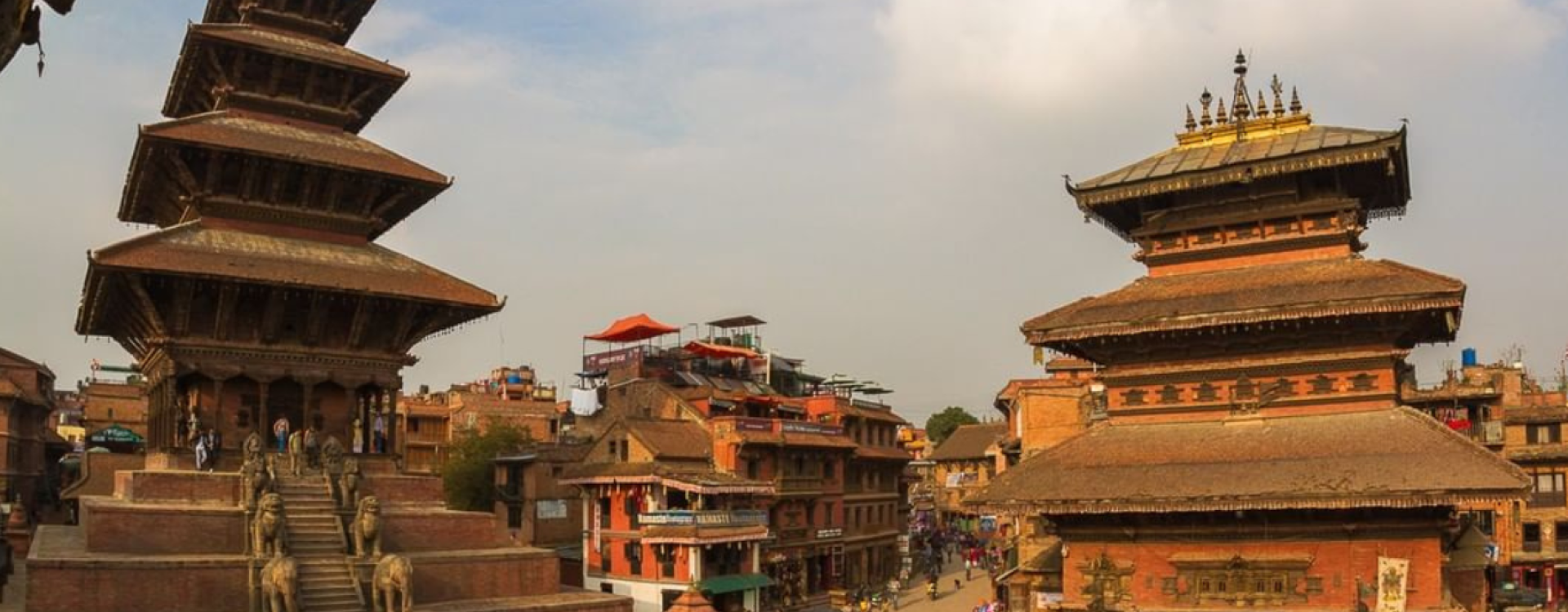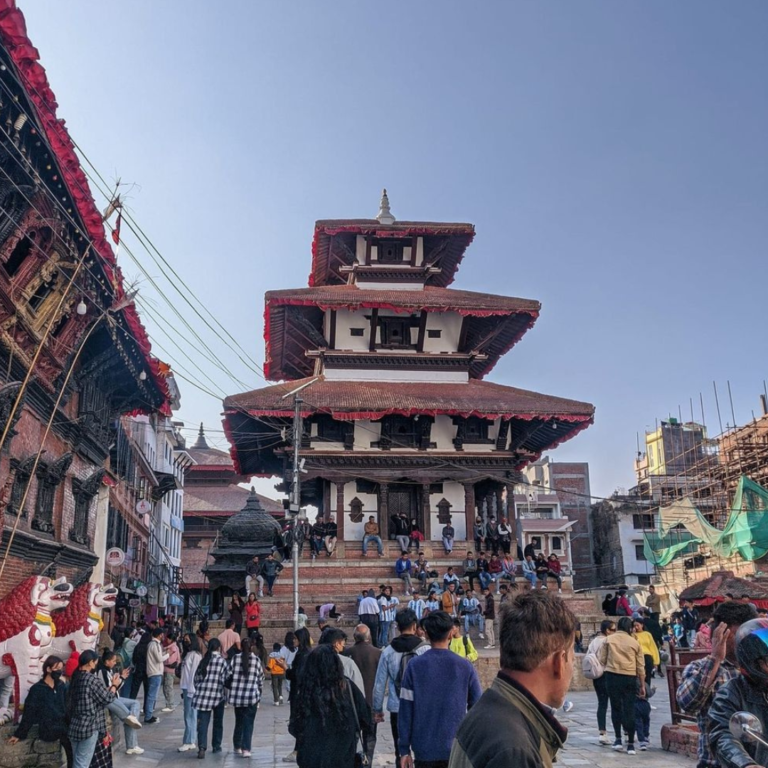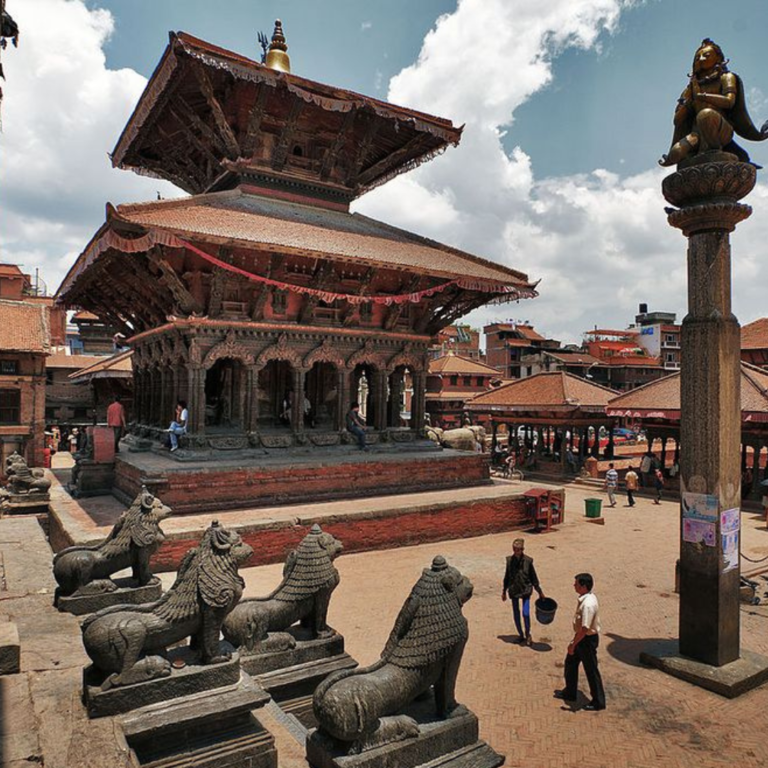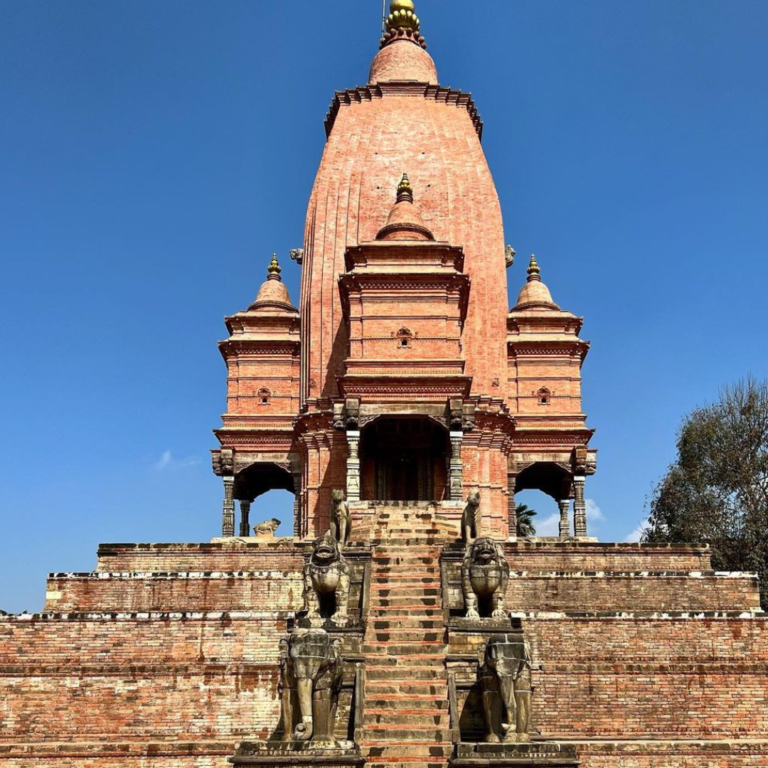
Durbar squares are a vital part of our country’s history and culture. Before the unification, Nepal was divided into small kingdoms, and today’s Durbar Squares are the most prominent remnants of those old kingdoms. In particular, three Durbar Squares in the Kathmandu Valley: Kathmandu Durbar Square, Patan Durbar Square, and Bhaktapur Durbar Square, were part of the three Newar kingdoms situated there before unification. All three are UNESCO World Heritage Sites. These sites consist of temples, idols, open courts, water fountains, and many more cultural artifacts. Due to the devastating earthquake of 2015, these sites have received significant damage, but most structures still remain.
Kathmandu Durbar Square is located in the heart of the capital Kathmandu. It is also known as Basantapur and Hanuman Dhoka. It is a historic landmark in Kathmandu that was constructed in 1770. This Durbar square was built between the 20th and 18th centuries by the Malla kings and, to this day, remains the focal point of the city. The place near Kathmandu Durbar Square Jonchhe was a popular hippie hangout junction from the 1960s to the 1970s. It is just about 15 minutes walk from Thamel, a place that is very well-known among tourists.
Unlike the other two durbars square, this one served as the home for the king of our country Nepal. After the unification, a big place was built within the area for the king to live, but now it serves as a museum. Kathmandu durbar square is often known as the place where different kings ruled our country for generations. It is also the home of the living goddess Kumari, and there is a famous sculpture called Kalbhairav, one of the gods who coexist in Hinduism and Buddhism. It has its own history altogether. The symbiosis of Hinduism, Buddhism, and Tantrism, which permeate Nepalese culture, can be openly seen in its multiple palaces, temples, and courtyards. People living in this area are called newer they are the ethnic groups of our country who have been living in Kathmandu before the unification of Nepal. They speak their language among each other they speak the national language, Nepali as well.

This area is a host to a lot of interesting local festivals throughout the year, Indrajatra is one of the very well-known festivals of this area, and it goes on for a week straight; the temples and monuments are mostly made of woods bricks and adobe clay and most of them date back to 17th century. Being an open place in the middle of a busy city, it is considered a good place for the locals to hang out. Most of the temples and monuments in Kathmandu Durbar Square date back all the way to more than the 17th century. All of the temples were partially or entirely damaged during the earthquake we had in 2015, so most of the temples are either already rebuilt or are under construction. This is the place that is most recommended for those who want to explore the royal history of Nepal as well.
Patan durbar square is located in the city of Lalitpur, Nepal, which is about 45 minutes faraway from Thamel. It is also called Patan Museum. It has unique bronze statues and ancient and religious objects. It is famous as one of the best museums in Asia.
Patan Durbar is one of the royal palaces of former Malla Kings of the Valley. The royal palace was built in 1734 on the site of a Buddhist monastery. The museum quadrangle is known as Keshav Narayan Chowk. The Late King Birendra Bir Bikram Shah inaugurated this museum in 1997.

As one enters the chowk, one can see various local shops selling typical Newari cuisine that consists of Yomari. Chhiola, kachela, beaten rice, Chhyang (Newari drink made from rice), etc. There are many tourist shops where they sell handmade art and crafts. Patan Durbar is a place where tourists can feel the fusion of art and tradition.
The Bhaktapur Durbar Square is the giant durbar square among the three durbar square. It has century-old temples, and especially love the details of wood-crafting in temples. It is located in Bhaktapur, the eastern part of Kathmandu Valley, also known as Bhadgoun or Khwopa Bhaktapur. It is known as the abode of traditional Nepali culture, customs, and unique arts of wood and pottery. The historical monuments and idols show the medieval age culture and tradition of Nepal. In Bhaktapur, indigenous Newari people are located in large groups. Bhaktapur Durbar Square was a former royal palace complex located. The Malla kings of Nepal from the 14th to 15th century and the kings of the Kingdom of Bhaktapur from the 15th to late 18th century until the kingdom was conquered in 1769.
The one in Bhaktapur was considered the biggest and the grandest among the three during its independence, but now many of the buildings that once occupied the square have been lost to frequent earthquakes. This place is one of the oldest cultural heritages where tourists can enjoy historical art and crafts. Here tourists can enjoy Bhakatapur’s Juju Dhau (homemade traditional curd), which is famous all over Nepal.

Bhaktapur Durbar Square is a place of culture, tradition, art, and craft. There, one can explore ancient architectural knowledge, experience the taste of local food, and have lots of new experiences of local Newari culture. These people can see lots of traditional pottery work, the Flore of this square is all made of red bricks, so this place looks even more unique and traditional. This is also the most recommended tourist spot for those who are very interested to know about a new culture.